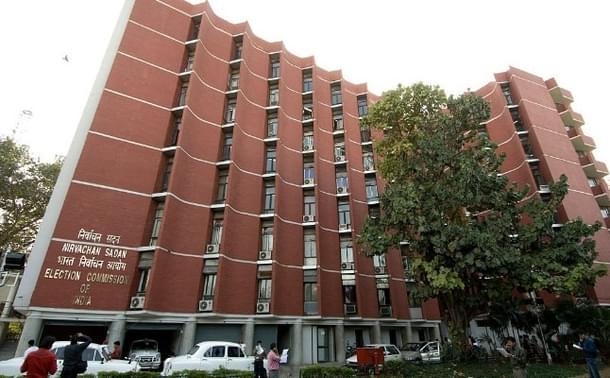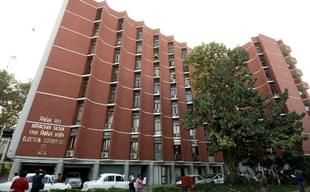Books
The Challenge Of Improving Capacity In India’s Public Institutions
Bob Smith
Mar 24, 2018, 03:15 PM | Updated 03:15 PM IST
Save & read from anywhere!
Bookmark stories for easy access on any device or the Swarajya app.


Rethinking Public Institutions in India. Edited by Devesh Kapur, Pratap Bhanu Mehta, and Milan Vaishnav. Oxford University Press. 2017.
Rethinking Public Institutions in India is a timely examination by some of India’s most insightful analysts (practitioners as well as scholars) of the country’s public institutions at the national level. Although it was compiled before the election in 2014 of the National Democratic Alliance (NDA) government led by Prime Minister Narendra Modi, it is an essential guide to the institutional context in which his government operates.
The focus of the book is on capacity. The editors argue that “improving the capacity of India’s public institutions is the single biggest challenge that India faces in the twenty first century”. The reason is that institutions shape how issues in public policy are defined, decided, and managed. However, in India, improving capacity is a slippery task. A paradox that runs through the book is that while the public sector can carry out select tasks with efficiency – examples mentioned include conducting elections, regulating monetary policy, and running an atomic weapons programme – it struggles to provide high-quality advice to ministers or effective services to members of the public, especially in basic health and education. The search for reasons leads us well beyond public institutions themselves. As several of the contributors show, it extends to how politics is practised and the distinctive characteristics of Indian society. For this reason, feasible ideas about how to make improvements are hard to develop. Getting them adopted is even harder.
The editors summarise capacity challenges in six themes and six transitions. The six themes are: personnel failures, including an ‘acute talent crunch’; legal ambiguities, including contesting views about the powers of federal institutions; coordination dilemmas, horizontally between agencies and vertically between levels of government; problems of external accountability, including a lack of transparency in the operations of Parliament and of capacity in the civil service to respond to legally mandated requests for information; problems of internal accountability, including a preoccupation with inputs rather than outcomes; and political interference, including easy transfer by politicians of inconvenient civil servants and strategically deployed inertia when powerful people are accused of wrongdoing.
The six transitions are hoped for as much as fulfilled. They are drawn by the editors from the detailed accounts provided by contributors. They include: from discretion to accountability and public reason; from secrecy to information; from low-capacity to high-capacity state; from centralisation to decentralisation; and from upward to downward accountability. As the editors see it, in a highly aspirational and active society, the status quo is challenged on multiple fronts. Calls for the powerful to be held to account can no longer be ignored; official secrecy can no longer be taken for granted; the local demands of citizens and forces from the wider world, including globalisation and climate change, require a much more capable state; pressures for more devolution of institutional responsibilities run contrary to increased centralisation of political party structures; and demands that institutions become more citizen-focused and outward looking are insistent. Accordingly, the editors pose the question: “Can India transition to a new equilibrium—a virtuous cycle of an accountable, high-capacity, decentralized, information-based state that is responsive to citizens rather than superiors?”

The book suggests that movement towards such a transition is at best mixed. There are specific chapters on the institutions of the presidency, Parliament, Supreme Court, Reserve Bank, Civil Service, and Election Commission. Further chapters discuss the institutions and processes of public expenditure governance (including references to the contested role of the now-abolished Planning Commission), regulation of infrastructure, accountability, financial accountability, and democratic decentralisation. They reprise in careful detail concerns summarised by the editors. Recurring concerns include the difficulty of evolving beyond inherited colonial practice, fears that the country’s key institutions are grafted on to an incompatible host, “the judicialization of politics and the politicization of the judiciary”, the lack of respect and resources for local-level institutions, the attractions of settling matters by making deals, the ineffectiveness of measures to cut corruption, the adverse impact of the same measures on willingness to make decisions, the persistence of seniority as an organising principle, and the contradictions between the impartial discharge of public duty and the temptations of politically allocated post-retirement appointments.
Many of the chapters are an education in themselves. Analysis of problems is grounded in a masterly appreciation of the twists and turns of institutional history. Although contributors are well aware of developments in comparable institutions internationally, suggestions for change are grounded also in an appreciation that legitimate and feasible changes need to fit India’s circumstances. However, building programmes to improve public sector capacity are hard to develop even in circumstances more propitious than in India. The challenge of patchy performance in the civil service is particularly tough because it is administered in ways that militate against incisiveness in policy analysis (the annual Economic Surveys are an exception) and effectiveness in management (arguably the ‘start up’ approach to organising the national identity card scheme – Aadhaar – is another exception).
The chapter on the civil service identifies problems by the basket load and makes worthwhile if cautious suggestions. Similarly, the chapter on public expenditure governance analyses how money is often spent badly and advocates the urgent development of performance measures. But advocates and opportunities for such strategic change are in short supply.
The book deserves a wide readership in India and beyond. It is, in itself, a most valuable resource because it probes relationships between politics and the wider public sector. However, its further value is that it suggests an enquiry into topics it has been able to cover only in part. Three come immediately to mind. The first is about leadership and coordination within the national government. The editors make acute but brief comments about the tendency to centralisation by prime ministers. Future studies that examine the roles of the Prime Minister, the Prime Minister’s Office, the Cabinet Secretariat, and policy leadership in the civil service would be invaluable.
The second is about relationships between the national and state governments. State governments have the responsibility for substantial fields of public policy, including in facilitating social and economic development. However, as the recent introduction of a national Goods and Services Tax has shown, they also have a large stake in national policies. For these reasons, a two-fold focus would be useful: first on the policy and management capacities of individual states; second, on how they can collaborate more fluently with each other and the national government on matters of national significance.
The third is about improving capacity to extend and regulate digital delivery of services to citizens. There is a tendency in some quarters to see digital delivery as a means of bypassing difficulties in the civil service. However, effectiveness in digital delivery and acceptance of it as a legitimate channel for interaction with citizens (as is now contested with the steady extension of requirements to present Aadhaar cards in order to receive services) may in fact depend on significant reorientation within the civil service.
The book is not always an easy read; but for anyone interested in current directions in India, it is an essential one.
Bob Smith is an adjunct professor in the School of Management at RMIT University, Melbourne, Australia, and a former public servant in several Australian states.





